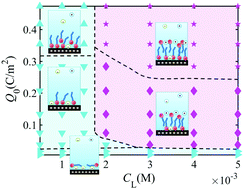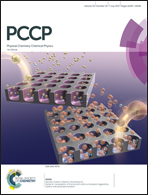A theoretical study on the morphological phase diagram of supported lipid bilayers
Abstract
Supported lipid bilayers (SLBs) have been widely used in drug delivery, biosensors and biomimetic membranes. The microscopic mechanism of SLB formation and stability depends on a number of factors underlying solvent-mediated lipid–lipid and lipid–substrate interactions. Whereas recent years have witnessed remarkable progress in understanding the kinetics of SLB formation, relatively little is known about the lipid phase behavior controlling the SLB stability under diverse solution conditions. In this work, we examine the structure of SLBs using classical density functional theory (CDFT) in the context of a coarse-grained model that accounts for ion-explicit electrostatic interactions, surface hydrophobicity, as well as the molecular characteristics of the lipid tails. A morphological phase diagram is constructed in terms of various intrinsic properties of lipid molecules (such as the lipid tail length, size and charge of the lipid head segments), substrate conditions (such as the surface charge density and hydrophobicity), and solution parameters (such as the ion concentration and ion type). The morphological phase diagram provides useful insights into the rational design and broader application of SLB membranes as different types of nano-devices.



 Please wait while we load your content...
Please wait while we load your content...